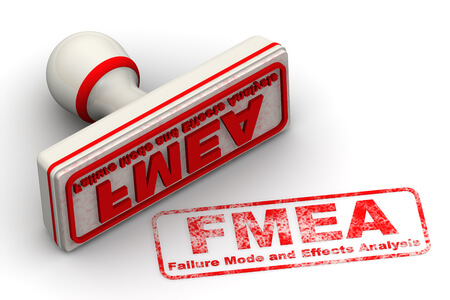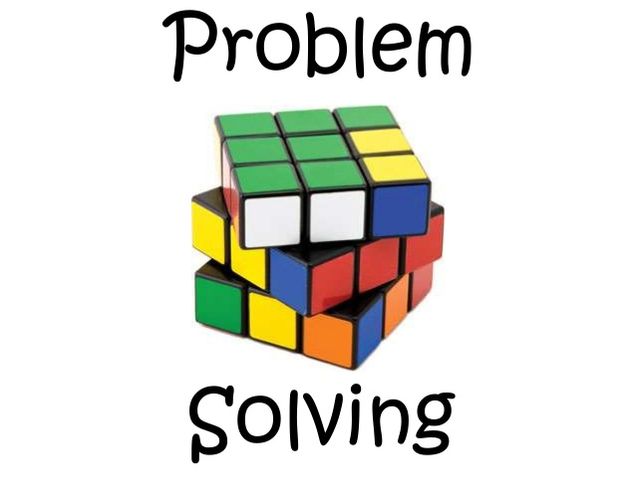Tagged: evidence-based legislation
Failure Modes and Effects Analysis in the Legislative Process
In my last post, I argued that the process of drafting new legislation should be undertaken with a problem-solving mindset. I suggested that problem-solving tools from a variety of disciplines could be advantageously adapted to the legislative process. In this post, I will present the manner in which one specific tool—Failure Modes and Effects Analysis (FMEA)—could be used in legislative drafting.
FMEA was originally developed as a tool to improve processes within the manufacturing industry. An FMEA is a “systemic method of identifying product and process problems before they occur.” Robin E. McDermott, Raymond J. Mikulak, Michael R. Beauregard, The Basics of FMEA 3 (1996). (Many of the details of the FMEA process discussed in this post come from The Basics of FMEA. I highly recommend that anyone interested in performing FMEAs in the legislative process read this book. The steps of an FMEA can be found in the book or online, here.) In the manufacturing context, the goal of an FMEA is to figure out how a new product or process is likely to fail, before that failure happens, and then to recommend improvements that will preemptively prevent the failure. In FMEA terminology, the process is designed to identify and resolve “failure modes” in a product or process.
In the legislative context, a bill working its way through the legislature can be thought of as the new “product or process” to which an FMEA can be applied. In this post, I will discuss where in the legislative process an FMEA could be performed, what the make-up of an FMEA team might be, and what beneficial output could be expected from an FMEA.
The authors of The Basics of FMEA, recommend that “[i]deally, FMEAs are conducted in the product design or process development stages, although conducting an FMEA on existing products and processes may also yield huge benefits.” The Basics of FMEA at 3. Likewise, a legislature could use FMEAs to analyze already existing laws. However, in this post, I will only describe FMEAs that would take place during the drafting process. Such an FMEA would likely be most useful to the legislative process after a committee performs hearings and before it votes on a bill. At this point, the committee has already gathered a wealth of useful information and the legislature still has wide latitude to make changes to the bill when potential failure modes are discovered.
The FMEA team itself should consist of four to six members. Id. at 15. Idealistically, the team will “bring a variety of perspectives and experiences to the project.” Id. This will likely result in team members having varying degrees of expertise in the relevant subject matter and a range of familiarity with the legislation being reviewed. For example, an FMEA team for a bill related to criminal justice might include: a legislative attorney familiar with the bill, a representative from the police force, an associate district attorney, a public defender, and representatives from advocacy groups or lobbyists. It is worth noting that many of the individuals on the team may be the same individuals who provided testimony in a committee hearing. Such overlap does not diminish the unique value that can be obtained by an FMEA. Likewise, an FMEA would in no way detract from the value of the committee hearing. Committee hearings give advocates an opportunity to state their case and respond to questions from members of the committee. The FMEA would give these individuals an opportunity to interact with one another and to work towards improving legislation in ways in which they can all agree.
It is also important to note that many of the FMEA team members may also represent the individuals that the law is meant to address—the “role occupants” and implementing agencies. See Ann Seidman & Robert B. Seidman, Instrumentalism 2.0: Legislative Drafting for Democratic Social Change, 5 Legisprudence 95, 95 (2011). The Seidmans note that a role occupant’s failure “to respond to a law’s commands, prohibitions or permissions, signifies . . .
that, in drafting the bill’s detailed prescriptions, the drafter failed adequately to take into account the relevant constraints and resources in the role occupant’s environment.” Id. at 136. Bringing representatives of role occupants and implementing agencies into the legislative process via FMEAs would help to reduce these drafting failures.
Of course, the ultimate language of a bill must be determined by legislators and legislative attorneys. Nevertheless, the recommendations of an FMEA team regarding specific bill language could be of significant help to those tasked with the actual drafting of the bill. An appropriate balance of power between drafters and the FMEA team can be established by providing FMEA teams with “clearly defined boundaries within which they are free to conduct the FMEA and suggest and implement solutions.” The Basics of FMEA at 20-23. For example, the scope of a drafting-focused FMEA could be limited to the language of the bill, excluding considerations of the substantive legislative plan embodied in the bill. While a broad legislative scheme may be well suited to effectuate desired change, the language of a bill may fail to adequately implement the legislative plan. Such an FMEA could identify, document, and recommend corrections to any problematic drafting discovered. Once the bill is revised, the FMEA team could re-convene and repeat its analysis.
Whenever a new step is added to a process, a fear may arise that the process is becoming more complex, and therefore less efficient. The inclusion of FMEAs in the process of drafting legislation would undoubtedly require legislative drafters to overcome a steep learning curve. Once that learning curve is overcome, however, use of the FMEA methodology will yield significant benefits. In the short term, the FMEA could uncover and correct potential problems in a bill before it leaves its committee. In the long term, effective FMEAs would decrease the likelihood that laws would need to be revised to address problems that were not foreseen during the drafting process. Idealistically, the end result will be a more efficient legislative drafting process resulting in the passing of better drafted laws.
 Andrew P. McDonough graduated from Boston University School of Law in May 2018.
Andrew P. McDonough graduated from Boston University School of Law in May 2018.
The Problem-Solving Legislature
Someone once told me that the large windows of the Massachusetts State House symbolize openness. They allow the public to see what their legislators are doing inside. The law-making that happens within is complex, as seen here, or here. In this post, I propose that legislatures should approach the complex law-making process as a problem-solving enterprise. Rather than simply trying to label the legislative process, I suggest that a problem-solving mindset—employing problem-solving tools and methodologies—applied to the development of every bill would result in better legislation.
Former Boston University Law Professors Ann and Robert Seidman, also conceived of law making in problem-solving terms. See, e.g., Ann Seidman & Robert B. Seidman, Instrumentalism 2.0: Legislative Drafting for Democratic Social Change, 5 Legisprudence 95 (2011). The Seidmans developed a “four-step, problem-solving methodology . . . [for] designing legislation aimed at ameliorating perceived social problems” Id. at 100. The eight-step methodology that I propose below bears some similarities and some differences to that of the Seidmans. The most significant difference between the two theories is focus. The Seidmans’ methodology is focused on how a drafter can craft a piece of legislation oriented around the behaviors of relevant actors, thereby achieving desired social change. See id. at 133-140. My methodology is focusesd more on the substantive solution a legislature decides to implement, and less on the drafting of that solution into a bill. They focus on the legislative drafter. I focus on the legislative process.
To this end, I have formulated the following outline of an effective problem-solving process. These steps were inspired, in part, by the scientific method, and the Eight Discipline Problem Solving process developed by the Ford Motor Company to resolve problems in a manufacturing environment. My eight steps are:
- State the problem or goal.
- Understand the problem (gather and analyze relevant data).
- Propose, discuss, and refine prospective solutions.
- Critically assess those solutions (Considering things such as costs, value, risks, and likelihood of success).
- Select and implement the most advantageous solution.
- Measure the results of the implemented solution.
- Communicate success.
- Identify the next problem or goal to address.
These steps could be used to develop a legislative solution in the following manner:
- State the problem or goal.
Problem statements in the early stages may be broad, and refined, as the process proceeds, into a more specific goal.
- Understand the problem (gather and analyze relevant data).
This step would likely be completed by a legislative committee. It is important for the committee to do more than reach out to experts, interest groups, and lobbyists for opinions and selective data. The committee must identify the relevant data that it needs to understand the problem, gather that data, and critically analyze it—which may require consulting experts in statistical analysis.
- Propose, discuss, and refine prospective solutions.
With a deep understanding of the problem, the committee should generate a wide range of solutions. Creativity is particularly valuable at this stage.
- Critically assess those solutions.
The legislature should assess the potential solutions using cost-benefit analyses, addressing constitutional limitations, and analyzing questions of political viability.
- Select and implement the most advantageous solution.
At this step, the Legislature must weigh two broad categories of considerations: (1) The results of the critical assessments completed in Step 4; and (2) The critical assessments performed by other problem solvers (other committees) working to solve other problems. Budgetary constraints may not support the most ambitious solution to every problem a legislature tackles. Accordingly, the solutions selected should be the best array of solutions possible within budgetary restraints.
- Measure the results of the implemented solution.
Designing a prospective solution requires identifying how to measure the success of that solution. This requires a method to monitor the solution after implementation.
- Communicate success [or failure].
Representative democracy benefits from an informed citizenry. Communicating the results of legislation ensures that citizens are aware of, and understand, what their government is doing and what needs to be done. Further, communicating legislative success can have a benefit within the legislature itself, by making other legislators aware of solutions that have worked to solve other problems.
- Identify the next problem or goal to address.
Measuring and reporting the effects of new legislation informs legislators and the public, giving new insight and revealing other, related problems. These newly identified problems require the legislature to return to Step 1.
Some might argue that what I have just described is what Legislatures actually do. They identify problems, gather information, and craft bills in light of what they have learned. The difference is in the details. It seems to me that the substance of much of the legislation that gets drafted is inspired by political ideology, perceived constitutional concerns, and political deal making. Each of these considerations likely belong in the legislative process. They should not, however, limit the range of solutions that legislatures consider. Rather, legislatures should seek to consider as broad a range of potential solutions as possible. Those solutions should be inspired by rigorous research, not politics. When political or constitutional considerations drive a legislature to select one solution over another, it should be clear what solutions they are passing over in favor of the ideological or politically expedient choice.
One way to effectuate this goal is to take advantage of problem-solving methodologies from a wide range of disciplines when attempting to solve problems (draft legislation). The Seidmans’ suggestion that drafters should consider the behaviors of various individuals has a place in this methodology. Their process is not, however, the only tool that can, or should, be applied to legislative problems. In a future post, I will present a problem-solving tool from the world of manufacturing that could be usefully inserted into the legislative process as part of instituting a problem-solving mindset.
I conclude by asking what expectations we should have for legislators in a representative democracy. I submit that we should expect them to make informed decisions. We should expect them to base solutions to problems on rigorously collected and analyzed information, and to enshrine those solutions into law. The problem-solving mindset that I advocate for would help to achieve this goal.
 Andrew P. McDonough anticipates graduating from Boston University School of Law in May 2018.
Andrew P. McDonough anticipates graduating from Boston University School of Law in May 2018.

